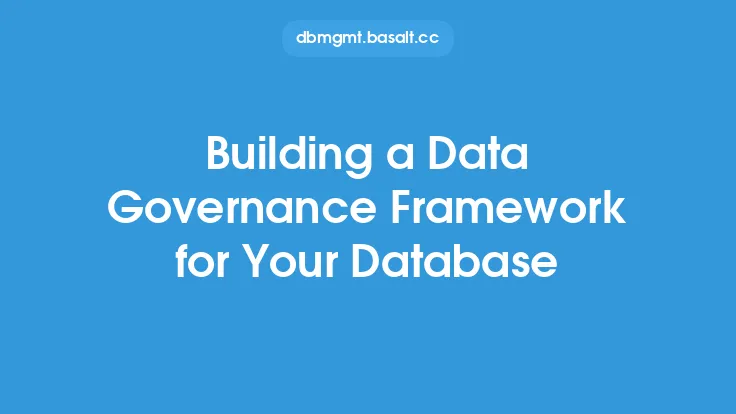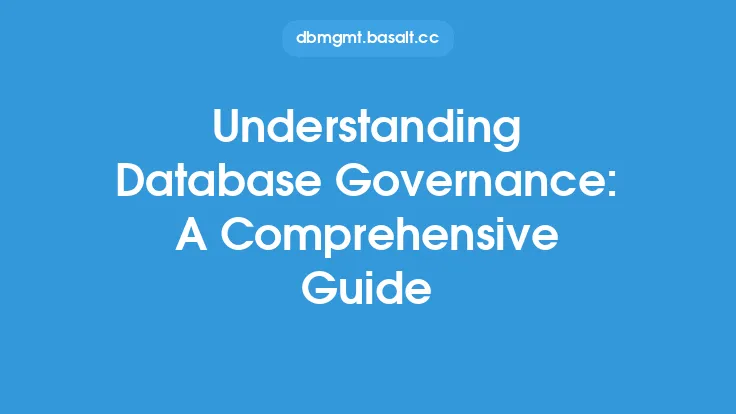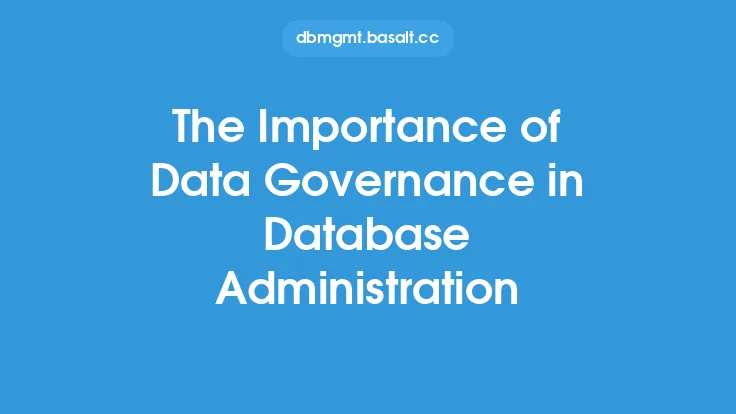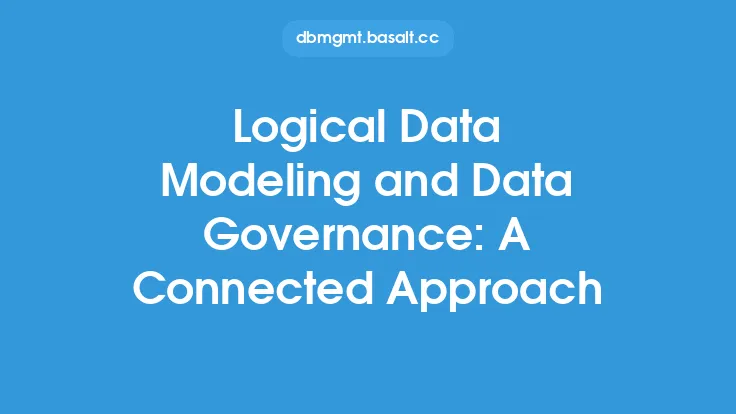Database governance is a critical aspect of database administration that ensures the effective management and use of an organization's data assets. A well-structured database governance framework is essential to achieve this goal. In this article, we will delve into the details of a database governance framework, its components, and how it can be implemented to ensure the optimal use of an organization's data.
Introduction to Database Governance Framework
A database governance framework is a set of policies, procedures, and standards that define how an organization's data is managed, accessed, and used. It provides a structured approach to database governance, ensuring that data is accurate, complete, and secure. The framework should be tailored to the organization's specific needs and should be flexible enough to adapt to changing business requirements. A well-designed database governance framework should include components such as data governance, data quality, data security, and data compliance.
Components of a Database Governance Framework
A database governance framework consists of several key components that work together to ensure the effective management of an organization's data. These components include:
- Data governance: This component defines the policies and procedures for managing an organization's data assets. It includes data ownership, data stewardship, and data management.
- Data quality: This component ensures that an organization's data is accurate, complete, and consistent. It includes data validation, data cleansing, and data normalization.
- Data security: This component ensures that an organization's data is secure and protected from unauthorized access. It includes access control, authentication, and encryption.
- Data compliance: This component ensures that an organization's data management practices comply with relevant laws, regulations, and industry standards. It includes data privacy, data protection, and data retention.
Implementing a Database Governance Framework
Implementing a database governance framework requires a structured approach. The following steps can be followed to implement a database governance framework:
- Define the scope and objectives of the framework: The first step is to define the scope and objectives of the framework. This includes identifying the data assets that need to be managed and the goals of the framework.
- Establish a governance structure: The next step is to establish a governance structure that includes data owners, data stewards, and data managers. This structure should define the roles and responsibilities of each individual or group.
- Develop policies and procedures: The next step is to develop policies and procedures for managing an organization's data assets. This includes data governance, data quality, data security, and data compliance.
- Implement data governance tools: The next step is to implement data governance tools such as data catalogs, data dictionaries, and data quality tools. These tools help to automate data governance tasks and ensure that data is accurate and consistent.
- Monitor and review the framework: The final step is to monitor and review the framework regularly. This includes tracking data quality metrics, monitoring data security, and reviewing data compliance.
Data Governance Tools and Technologies
There are several data governance tools and technologies that can be used to support a database governance framework. These include:
- Data catalogs: A data catalog is a centralized repository that stores metadata about an organization's data assets. It provides a single source of truth for data definitions, data lineage, and data quality.
- Data dictionaries: A data dictionary is a repository that stores definitions of an organization's data assets. It provides a single source of truth for data definitions and data lineage.
- Data quality tools: Data quality tools are used to validate, cleanse, and normalize an organization's data. They help to ensure that data is accurate, complete, and consistent.
- Data security tools: Data security tools are used to protect an organization's data from unauthorized access. They include access control, authentication, and encryption.
- Data compliance tools: Data compliance tools are used to ensure that an organization's data management practices comply with relevant laws, regulations, and industry standards. They include data privacy, data protection, and data retention.
Best Practices for Database Governance
There are several best practices that can be followed to ensure effective database governance. These include:
- Define clear roles and responsibilities: Clear roles and responsibilities should be defined for data owners, data stewards, and data managers.
- Establish a governance structure: A governance structure should be established that includes data owners, data stewards, and data managers.
- Develop policies and procedures: Policies and procedures should be developed for managing an organization's data assets.
- Implement data governance tools: Data governance tools should be implemented to automate data governance tasks and ensure that data is accurate and consistent.
- Monitor and review the framework: The framework should be monitored and reviewed regularly to ensure that it is effective and efficient.
Challenges and Opportunities
Implementing a database governance framework can be challenging. Some of the common challenges include:
- Lack of resources: Implementing a database governance framework requires significant resources, including time, money, and personnel.
- Lack of expertise: Implementing a database governance framework requires specialized expertise, including data governance, data quality, and data security.
- Resistance to change: Implementing a database governance framework can require significant changes to an organization's culture and processes. This can be resisted by some individuals or groups.
- Opportunities: Implementing a database governance framework can provide several opportunities, including improved data quality, improved data security, and improved compliance. It can also provide a competitive advantage by enabling an organization to make better decisions and improve its operations.
Conclusion
A database governance framework is a critical component of database administration that ensures the effective management and use of an organization's data assets. It provides a structured approach to database governance, ensuring that data is accurate, complete, and secure. The framework should be tailored to the organization's specific needs and should be flexible enough to adapt to changing business requirements. By following best practices and using data governance tools and technologies, an organization can implement an effective database governance framework that provides several benefits, including improved data quality, improved data security, and improved compliance.





